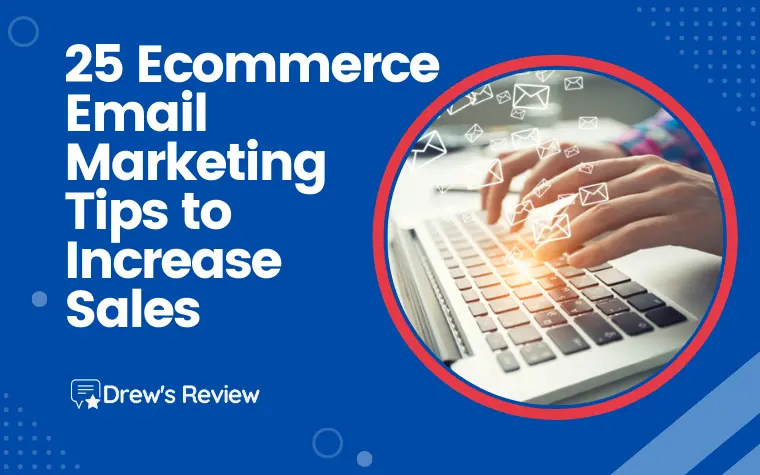
Are you looking for ways to increase sales through your eCommerce store? If so, you should be using email marketing. Email marketing is one of the most effective ways to reach out to customers and promote your products.
Having email data is your own, not even your competition has this, and it's a powerful tool when used correctly. Email is your tool for building relationships and providing value to your customers. It is key in driving sales and brand loyalty for your eCommerce store.
How you will use email is important, just like with social media, you want to be strategic. You can use email marketing in a few different ways, but the main purpose is to ensure that the people on your list are treated special. You'll provide them with opportunities that someone that's not on your list wouldn't get.
Email Marketing Campaigns That You Need to Incorporate.
These are a few email marketing campaigns you should consider incorporating into your strategy.
1. Abandoned Cart Emails:
The first campaign is an abandoned cart. This is when someone has items in their cart but doesn't follow through with the purchase. You can set up an automated email that will go out to them a day or two after they've left their items behind.
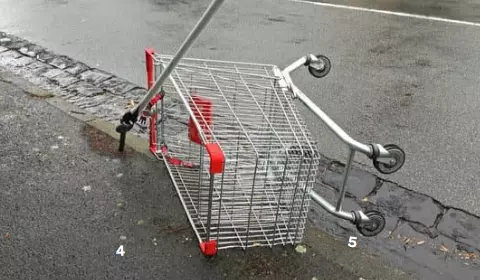
In this email, you'll want to include images of the items they left, as well as a special offer or discount code to encourage them to come back and complete their purchase.
There are two different kinds of abandoned cart options you can use:
Abandoned Cart Email
If your customers don't complete their purchase, you can send them an email reminding them of the items they left behind and offer a discount to encourage them to come back and complete their purchase.
Abandoned Cart Series
This is where you will send your customers a series of emails to encourage them to come back and complete their purchase. This can be a series of three emails, with the first email being sent a day after they've left their cart, the second email is sent a few days later, and the third email being sent a week later.
2. Promotional Offer Emails:
Another great campaign to include in your email marketing strategy is promotional offer emails. These are emails that highlight a specific product or service that you're offering a discount on.
This is a great way to increase sales, as well as get people interested in your products or services. You can also use these types of emails to upsell customers on other products or services that you offer.
For example, if you sell clothing, you could send an email promoting new arrivals and include a discount code for 20% off the purchase. Or if you sell cosmetics, you could promote a new eyeshadow palette and include a free shipping code with the purchase.
You will want to segment your list for these types of emails, as not everyone will be interested in every promotion. You can segment your list by purchase history, location, or even interests.
3. Up-Sell and Cross-Sell Emails
Another great way to increase sales with email marketing is to upsell and cross-sell customers. Upselling is when you offer a customer a more expensive or upgraded version of the product they're interested in.

For example, if someone is interested in buying a basic t-shirt, you could upsell them to a t-shirt that's made with higher quality materials or one that's a different color.
Cross-selling is when you offer customers complementary products to the ones they're interested in. For example, if someone is interested in buying a dress, you could cross-sell their shoes or a piece of jewelry that would go great with the dress.
Upselling and cross-selling are great ways to increase average order value and boost sales.
4. Re-Engagement and Customer Loyalty Emails
Another great campaign to include in your email marketing strategy is a re-engagement or customer loyalty email. These are emails that are sent to customers that haven't interacted with you in a while.
The goal of these emails is to get customers interested in your brand again and encourage them to make a purchase. You can do this by offering a discount code, or highlighting new products or services that you offer.
You can also use these types of emails to promote customer loyalty programs. For example, if you have a points-based loyalty program, you could send an email reminding customers of how many points they have and what they can redeem them for.
There are a few different re-engagement and loyalty emails that you can focus on:
Life Event Emails:
These are emails that are sent to customers around special occasions or holidays.
For example, you could send an email wishing your customers a happy birthday and offering them a discount code to use on their next purchase. Or you could send an email promoting your Mother's Day sale.
Replenishment Emails:
These are emails that are sent to customers when they're running low on a product they've purchased from you in the past.For example, if someone buys a bottle of shampoo from you, you could send them an email when they're running low and need to buy more.
You can also use replenishment emails as an opportunity to upsell or cross-sell customers. For example, if someone is running low on laundry detergent, you could send them an email promoting your new scent booster and include a discount code for their next purchase.
Win Back Emails:

These are emails that are sent to customers that haven't interacted with you in a while.
For example, if someone hasn't made a purchase from your online store in the past six months, you could send them an email offering them a discount code to use on their next order
Top Tips for Successful Ecommerce Email Marketing Campaigns
Here are some tips to follow when considering your ecommerce email campaigns.
Don't Be Boring
The first rule of e-commerce email marketing is to not be boring. Your customers get a lot of emails, and if you want them to pay attention to yours, you need to make it interesting.
One way to do this is to personalize your email campaigns. You can do this by including the customer's name in the subject line or in the body of the email. You can also segment your list so that you're only sending relevant information to each customer. Even consider using playful emojis in the subject line and content.
Don't Make Your Newsletter too "Salesy"

Your eCommerce newsletter should be a mix of content and Promotional emails.
If you make it all about the sale, your existing customers will get turned off and unsubscribe.
Instead, focus on providing valuable content that your customers will find interesting and useful.
You can also use your newsletter to promote special sales or discounts. Just make sure that these promotions are relevant to your audience and that they're not too frequent.
Have a Welcome Email for New Subscribers
Ecommerce emails play an important role in engaging and converting customers, and one key aspect that many brands overlook is the welcome email for new subscribers. This email serves as a critical touchpoint, offering your customers important information and valuable content right off the bat.
By including things like links to relevant product pages or helpful customer support resources, you can help to orient your new subscribers and make them feel welcomed into the fold.
Additionally, well-designed graphics or attractive images can catch the eye of your recipients and encourage them to keep engaging with your brand.
Overall, a well-crafted welcome email for new subscribers is essential for ensuring that your eCommerce efforts are effective and that customers feel appreciated by your brand.
Segment the Crap out of Your List
Ecommerce emails can be a powerful tool for driving sales and increasing customer engagement.
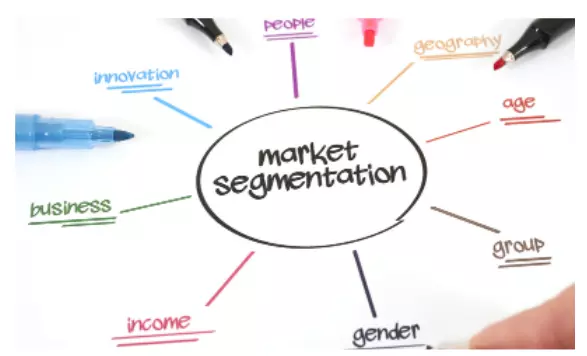
However, the effectiveness of these emails is greatly dependent on the quality of the list that you are sending them to. One way to optimize your eCommerce emails is to segment your list as much as possible.
By dividing your list into smaller groups based on specific criteria, such as interests or purchase history, you will be able to create messages that are more relevant and appealing to each individual recipient.
This in turn will boost open and click-through rates, allowing you to reach more potential customers and increase your overall revenue.
Use a Campaign Tagging Framework
One way to organize your email marketing strategies is through a campaign tagging framework.
This approach involves assigning tags to specific audiences or customer segments, allowing you to track their responses to individual messages and fine-tune future campaigns accordingly.
By segmenting your audience into distinct categories, you can ensure that your emails reach the right people at the right time and are optimized for maximum engagement. Your email marketing tool should have this feature built-in.
Don't Be Too Generic
Sending too many generic emails can quickly lead to customer fatigue. Instead, eCommerce businesses should focus on personalizing their messages and tailoring them to the individual needs of each customer.
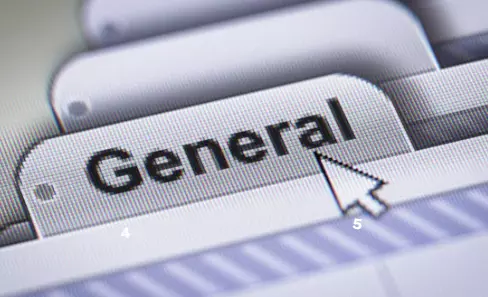
One way to do this is to segment your email subscribers and send targeted emails to each group. For example, you might create separate email lists for first-time buyers and repeat customers, and send different types of messages to each group.
You can also use purchase history and other data points to create more customized messages. Never send out a generic email to your list, unless it's newsletter-style or something that everyone can benefit from like a site-wide sale or event.
Understand How Spam Filters Work
Spam filters are a crucial part of email marketing, and understanding how they work is essential for anyone looking to improve their eCommerce email strategy.
There are two main types of spam filters: those that filter based on the content of the message, and those that filter based on the sender.
Content-based filters look for keywords and phrases that are typically associated with spam, such as "free trial" or "click here." Sender-based filters keep track of the IP addresses that send messages to your inbox, and if too many messages from a particular IP address are marked as spam, that IP address will be flagged and messages from it will be blocked.
In order to avoid having your e-commerce emails filtered out as spam, it's important to avoid using common spam trigger words and to make sure your email list is up-to-date and accurate. Additionally, keeping an eye on your sender's reputation score is a good way to ensure that your messages are getting through to your customers.
Get an Email Address at The Most Earliest Opportunity
You've just started your eCommerce store and you're off to a great start. You've built a beautiful website, added some amazing products, and you're ready to start selling. But there's one important thing you're missing: an email address. Collecting email addresses should be one of your top priorities from the very beginning.
Why? Because email is still one of the most effective marketing channels available. In fact, for every $1 spent on email marketing, businesses see an average return of $42 (source). That's a 4,200% ROI!
And yet, far too many businesses wait until they've already established to start collecting email addresses. As a result, they miss out on a powerful opportunity to build deeper relationships with their customers from the very beginning.
Have a Clear Call to Action
One of the most important aspects of an effective call to action is clarity. The text in your email should be concise and easy to understand so that the reader immediately knows how to take action.

This might mean including a clear button or link that the reader can simply click on, or it might mean using language such as "Buy now" or "Sign up today."
Whatever form your call to action takes, it should be simple enough that anyone reading it will know exactly what you want them to do next.
Use it for Discounts and Promotions
There are a few different ways you can use email to offer discounts and promotions.
First, you can send out special coupons and codes that customers can use when they purchase items from your website.
Second, you can create email campaigns that offer discounts on specific products or services. And third, you can send out periodic emails that highlight special sales and promotions.
Use Price Drop Emails
This type of email notifies subscribers when prices for specific products drop, encouraging them to take advantage of the sale or promotion.
As many customers are likely to be drawn in by low prices, price drop emails can be highly effective at driving purchases.
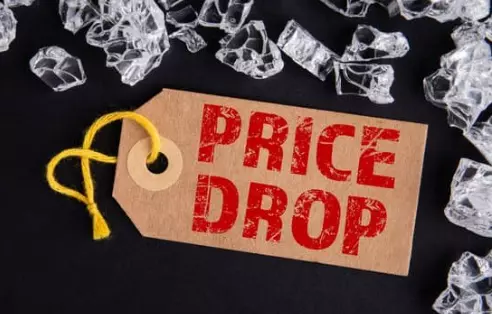
Since shopping cart abandonment rates tend to be fairly high, price drop emails can help retailers recoup sales from potential customers who may have otherwise opted out of purchasing.
Send Anniversary Emails
Anniversary emails are a great way to show your loyal customers that you value their business.
By sending a special offer or discount on their anniversary, you can show your appreciation and encourage them to continue shopping with you.
Back in Stock Emails
These emails are a great tool for retailers to keep their customers updated on new product releases and restocks.
By including information such as estimated arrival dates, retailers can help their customers plan ahead and build excitement around new products.
Furthermore, back-in-stock emails allow retailers to collect valuable purchase data from their customers, giving them an even more accurate picture of what products are most likely to sell well.
Overall, e-commerce emails are an essential part of today's retail landscape, and back-in-stock messages represent just one small but important piece of this larger puzzle.
Choose the Right Email Frequency
One of the most important factors in determining your email frequency is understanding your customers' preferences.
Some people prefer to receive emails on a regular basis, while others might only be interested in receiving occasional messages. Similarly, there are various types of emails that might be more or less relevant to different customers.
For instance, some folks might enjoy getting regular sales updates from their favorite brands, while others might prefer more customized recommendations based on their individual shopping behaviors and habits.
Finding the right email frequency requires recognizing what makes your customers tick and tailoring your approach accordingly. But with a little research and experimentation, you can strike the perfect balance and help drive long-term growth for your business.
Design Email Templates
So, what makes for a successful eCommerce email? Here are a few design tips to keep in mind:
Use a clear and concise layout: Keep your email templates simple and easy to navigate. Use clear headings and subheadings, and make sure your call-to-action is prominently displayed.
Use images sparingly: too many images can make an email look cluttered and difficult to read. Instead, focus on using quality images that complement your text.
Incorporate branding elements: Your email template should reflect your brand’s identity. Use your logo, brand colors, and font styles to create a consistent look and feel.
Plan Ahead
When it comes to eCommerce emails, it is important to plan ahead and develop a strategy that works for your business.
This includes taking into account factors like audience segmentation, preferred design styles, the ideal timing for email sends, and more.
It is crucial to keep track of data and metrics to monitor how your campaigns are performing over time. By planning ahead and carefully considering all aspects of your email marketing strategy, you can optimize your efforts and maximize sales.
Ecommerce Email Marketing Conclusion
Email marketing is a powerful tool that can help any eCommerce business drive sales and grow its customer base. By using the right eCommerce email marketing strategy guidelines as outlined above, you can create successful email marketing campaigns that will help your ecommerce business reach its goals.
If your business is new, you won't have much data to go on. Try surveying your target audience to see what type of email content they would find most valuable. This will give you a starting point for your email marketing efforts and help you determine the best course of action for your business.
If you are new and want more training on ecommerce which includes email marketing, you might want to consider a course. Most training programs will include email training. You can also find plenty of free advice on ecom forums, Youtube channels, etc.
Don't forget to A/B test! This is especially important if you are new to email marketing. Test different subject lines, calls to action, images, and more to see what works best for your audience. Over time, you will develop a better understanding of what type of content resonates with your customers and drives conversions.
Be sure to keep track of data and metrics so that you can continually optimize your email marketing campaigns. By tracking things like open rates, click-through rates, and purchase rates, you will be able to identify areas for improvement and make changes that will help boost your bottom line for your ecommerce site.
Liked this article? Sharing is caring!
- How I Make Faceless YouTube Channels With AI - April 9, 2024
- Top 21 Faceless YouTube Niches to Earn Big Profits in 2024 - April 3, 2024
- Dave Nick YouTube Automation Systems Review 2024 - March 28, 2024
